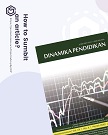Student Mobility in The Rising Peripheries
(1) Utrecht University
Abstract
This research aims to investigate the different pattern of Chinese Indonesian student mobility following three main political sequences defined by not only different period but also the dominant mode of each time. The object of this research is Chinese Indonesian student. Using historical comparative analysis, this paper explores and compares the historical trajectory of transnational mobility of Indonesian students to China. In every sequence, the particular mobility pattern of Chinese-Indonesian students will be analyzed in relation to national politics within certain bilateral and global framework. Drawing on the comparative historical analysis, this research explores how a specific sequence affects specific student mobility between Indonesia and China. The analyses go further to investigate the continuity between sequences, the linkages between the past mobility to a contemporary one. Building on these analyses, this research argues that nation-states policies and trans-state relation that develop overtime play a significant role in defining Indonesian student mobility to China.
Keywords
Full Text:
PDFReferences
Akmaliah, W. (2015). Indonesia yang Dibayangkan: Peristiwa 1965-1966 dan Kemunculan Eksil Indonesia. Jurnal Masyarakat dan Budaya, 17(1), 65-76.
Altbach, Philip G. “Globalisation and the University: Myths and Realities in an Unequal World.†Tertiary Education & Management 10, no. 1 (2004): 3–25.
Altbach, Philip G., and Toru Umakoshi. Asian Universities: Historical Perspectives and Contemporary Challenges. JHU Press, 2004.
“Ambassador: Indonesia-China Cooperation Is at Its Highest Level Ever - People’s Daily Online.†Accessed June 20, 2015. http://en.people.cn/n/2015/0417/c98649-8879957.html.
Anderson, Benedict. Imagined Communities. London; New York: Verso, 1983.
Appadurai, Arjun. “Sovereignty without Territoriality: Notes for a Postnational Geography.†The Geography of Identity, 1996, 40–58.
Balerna, M., M. Fosset, R. Chicheportiche, G. Romey, and M. Lazdunski. “Constitution and Properties of Axonal Membranes of Crustacean Nerves.†Biochemistry 14, no. 25 (December 16, 1975): 5500–5511.
“Chinese, Indonesian Presidents Greet Bilateral Meeting of People-to-People Exchange Mechanism - Xinhua | English.news.cn.†Accessed June 20, 2015. http://news.xinhuanet.com/english/2015-05/27/c_134275723.htm.
Cheung*, G. C. (2005). Involuntary Migrants, Political Revolutionaries and Economic Energisers: a history of the image of overseas Chinese in Southeast Asia. Journal of Contemporary China, 14(42), 55-66.
Cresswell, T. (2010). Towards a politics of mobility. Environment and planning D: society and space, 28(1), 17-31.
Fahey, Johannah, and Jane Kenway. “Thinking in a ‘worldly’ Way: Mobility, Knowledge, Power and Geography.†Discourse: Studies in the Cultural Politics of Education 31, no. 5 (December 2010): 627–40. doi:10.1080/01596306.2010.516943.
Fitzgerald, S. (1970). China and the overseas Chinese: perceptions and policies. The China Quarterly, 44, 1-37.
Futao Huang. “Internationalization of Higher Education in the Developing and Emerging Countries: A Focus on Transnational Higher Education in Asia.†Journal of Studies in International Education 11, no. 3–4 (September 1, 2007): 421–32. doi:10.1177/1028315307303919.
Glick Schiller, N. (2012). Migration and development without methodological nationalism: Towards global perspectives on migration. In Migration in the 21st century: political economy and ethnography (pp. 38-63). Routledge.
Godley, Michael R. “The Sojourners: Returned Overseas Chinese in the People’s Republic of China.†Pacific Affairs 62, no. 3 (1989): 330. doi:10.2307/2760626.
Godley, Michael R., and Charles A. Coppel. “The Pied Piper and the Prodigal Children. A Report on the Indonesian-Chinese Students who went to Mao’s China.†Archipel 39, no. 1 (1990): 179–98. doi:10.3406/arch.1990.2627.
Govaars-Tjia, Ming Tien Nio. Dutch Colonial Education: The Chinese Experience in Indonesia, 1900-1942. Chinese Heritage Centre, 2005.
Hoon, C. Y. (2011). Chinese identity in post-Suharto Indonesia: Culture, politics and media. Apollo Books.
“Joint Statement on Strengthening Comprehensive Strategic Partnership between the People’s Republic of China and The Republic of Indonesia.†Accessed June 20, 2015. http://www.fmprc.gov.cn/mfa_eng/zxxx_662805/t1249201.shtml.
Kell, Peter Michael, and Gillian Vogl. International Students in the Asia Pacific. Dordrecht: Springer Netherlands, 2012. http://link.springer.com/10.1007/978-94-007-2897-4.
Kell, Peter M., and Gillian J. Vogl. “Trans-National Education: The Politics of Mobility, Migration and the Wellbeing of International Students,†2008. http://ro.uow.edu.au/edupapers/948/.
Kim, Terri. “Transnational Academic Mobility, Knowledge, and Identity Capital.†Discourse: Studies in the Cultural Politics of Education 31, no. 5 (December 2010): 577–91. doi:10.1080/01596306.2010.516939.
Liu, H. (2006). The Transnational Construction of “National Allegoryâ€: China and the cultural politics of postcolonial Indonesia. Critical Asian Studies,38(3), 179-210.
Luke, Carmen. “Capital and Knowledge Flows: Global Higher Education Markets.†Asia Pacific Journal of Education 25, no. 2 (November 2005): 159–74. doi:10.1080/02188790500337940.
Mahoney, J., & Rueschemeyer, D. (2003). Comparative historical analysis.Comparative historical analysis in the social sciences, 3-38.
McKeown, Adam M., and Association for Asian Studies Meeting. Conceptualizing the Chinese Diaspora, 1842 to 1949. Northeastern University, 1998.
Murray, Douglas P. “Chinese Education in South-East Asia.†The China Quarterly, no. 20 (October 1, 1964): 67–95.
OECD. Education at a Glance 2014. Education at a Glance. OECD Publishing, 2014. http://www.oecd-ilibrary.org/education/education-at-a-glance-2014_eag-2014-en.
Postiglione, Gerard A. “Questioning Centre–Periphery Platforms.†Asia Pacific Journal of Education 25, no. 2 (November 2005): 209–25. doi:10.1080/02188790500338138.
Sukma, Rizal. “Indonesia’s Response to the Rise of China: Growing Comfort amid Uncertainties.†The National Institute for Defense Studies, The Rise of China: Responses from Southeast Asia and Japan, 2009.
Suryadinata, Leo. “Indonesian Chinese Education: Past and Present.†Indonesia 14 (October 1972): 49. doi:10.2307/3350732.
Tjhin, C. S. (2012). Indonesia’s Relations with China: Productive and Pragmatic, but not yet a Strategic Partnership. China Report, 48(3), 303-315.
Teichler, Ulrich. “The Changing Debate on Internationalisation of Higher Education.†Higher Education 48, no. 1 (2004): 5–26.
Refbacks
- There are currently no refbacks.

This work is licensed under a Creative Commons Attribution 4.0 International License.

.png)

.png)





